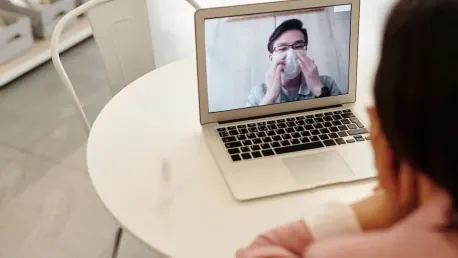The COVID-19 pandemic brought about unprecedented changes in many aspects of healthcare, including the treatment of opioid use disorder. One of the most significant changes was the relaxation of regulations around the prescription of buprenorphine, a medication approved by the FDA for treating opioid use disorder. This shift allowed for the use of telemedicine to prescribe buprenorphine, which has had a profound impact on the fight against the opioid crisis in the United States. As the pandemic wanes, it is crucial to maintain these relaxed regulations to continue saving lives.
The Impact of Regulatory Relaxation
Increased Access to Lifesaving Medication
During the pandemic, the U.S. federal government allowed practitioners to prescribe buprenorphine without an initial in-person visit. This change meant that an initial telemedicine visit, using either audio-visual or telephonic connections, was sufficient. This regulatory relaxation removed significant barriers to accessing treatment, making it easier for people with opioid use disorder to receive the help they needed. The increased accessibility of buprenorphine has been a critical factor in reducing overdose deaths during the pandemic. Before this regulatory relief, many patients faced logistical challenges that prevented them from making it to appointments, whether due to transportation issues, work schedules, or even the stigma associated with visiting an addiction clinic.
Furthermore, the ability to prescribe buprenorphine through telemedicine ensured that patients could continue receiving care even when in-person interactions were risky due to the virus. This resulted in a noteworthy increase in the number of individuals who could access this life-saving medication, which significantly contributed to reducing the rates of opioid overdoses. This model of care removed the physical and psychological barriers, making it accessible for those who wouldn’t have otherwise sought help.
No Evidence of Increased Misuse
One of the primary concerns about relaxing buprenorphine-prescribing regulations was the potential for increased drug misuse or diversion. However, studies have shown that the misuse of buprenorphine has actually decreased since the telemedicine rule was implemented. This evidence suggests that the benefits of increased access to treatment far outweigh the risks of potential misuse. The data supports the continuation of these relaxed regulations to ensure ongoing access to lifesaving medication. Various research efforts throughout the pandemic have been aimed at understanding the implications of these regulatory changes, and the results have consistently pointed toward positive outcomes.
Rather than seeing a rise in illicit use, the ease of accessing treatment prescriptions via telemedicine has translated to more people managing their opioid use disorder effectively. This has eased the burden on emergency services and reduced the number of opioid-related admissions. This strongly indicates that fears of increased diversion were largely unfounded, and it calls into question the reasoning behind policies that seek to reinstate restrictive measures. The practical, real-world outcomes advocate for a sustained telemedicine approach in combating opioid addiction.
The Effectiveness of Telemedicine
Equitable Access to Care
Telemedicine has played a crucial role in increasing equitable access to care for individuals with opioid use disorder. By removing the need for an initial in-person visit, telemedicine has made it easier for people in rural or underserved areas to access treatment. This has been particularly important during the pandemic, when travel and in-person interactions were limited. The use of telemedicine has helped to bridge the gap in healthcare access, ensuring that more people can receive the treatment they need. In many rural settings, medical resources are often scarce, and residents may have to travel considerable distances to the nearest treatment facility.
Telemedicine has effectively decentralized healthcare delivery, extending the reach of physicians and addiction specialists. This model is transformative, not just during a pandemic but as a long-term solution for healthcare inequality. It allows for a more inclusive approach, bringing critical addiction treatment to populations that have been historically marginalized or overlooked. Thus, telemedicine is not only a technological advancement but also a step towards a more just and equitable healthcare system.
Reducing Stigma and Embracing Technology
Telemedicine has also helped to reduce the stigma associated with seeking treatment for opioid use disorder. By allowing patients to receive care from the privacy of their own homes, telemedicine has made it more comfortable for individuals to seek help. Additionally, the use of technology in modern medicine has been embraced by both patients and providers, leading to more efficient and effective treatment. The success of telemedicine during the pandemic highlights the need to continue utilizing this technology in the fight against the opioid crisis.
Patients who might have felt judged or self-conscious about entering a physical clinic now have the chance to pursue recovery without the fear of societal stigma. Moreover, digital health platforms can enable more comprehensive monitoring and follow-up, ensuring continuous care. Healthcare providers, too, have found telemedicine to be a powerful tool, allowing them to manage more patients and deliver consistent, high-quality care irrespective of geographical barriers. This technology has proven its worth and resilience, establishing itself as an indispensable part of contemporary medical practice.
Challenges from DEA and Policy Makers
Proposed Restrictions and Public Opposition
Despite the evident success of telemedicine in treating opioid use disorder, the DEA has shown a proclivity for restricting access to buprenorphine. The agency proposed rules to revert to requiring in-person visits shortly after the initial telemedicine prescription and suggested creating a special registry for prescribers. These proposed rules faced significant public and expert opposition, as they would create unnecessary barriers to treatment. The opposition ultimately led to the rejection or delay of these proposed rules, but the threat of future restrictions remains. Attempts to go back on the progress made by telemedicine reflect a resistance to change within regulatory bodies, often grounded in concerns that do not hold up to scientific scrutiny.
It is crucial for policymakers to listen to the voices of public health professionals, addiction experts, and the individuals directly affected by opioid use disorder. The blanket imposition of rigid regulations can undermine the gains made and re-impose barriers that have been proven unnecessary. Furthermore, special registries for prescribers may deter healthcare providers who are already stretched thin, further limiting access to necessary care. To counter the threat of such restrictive measures, continuous advocacy and dissemination of positive telemedicine outcomes are essential.
The Need for Permanent Regulations
To ensure ongoing access to treatment and further reduce overdose deaths, it is essential to make the relaxed telemedicine regulations permanent. The evidence clearly shows that telemedicine has not led to increased drug misuse or diversion and has instead made it easier for vulnerable populations to access critical care. Policymakers must prioritize public health outcomes and base their decisions on evidence rather than unfounded concerns about diversion. Maintaining these regulations is crucial for continued success in battling the opioid overdose crisis.
The pandemic has provided a unique opportunity to assess and innovate within the healthcare system, and reverting to old, restrictive measures would be a missed opportunity. Instead, embracing the lessons learned can pave the way for a more adaptable and humane approach to addiction treatment, one that meets patients where they are, literally and figuratively. Permanent regulations would cement the advances made and ensure that the gains in overdose prevention and access to care are not lost.
Evidence Against Increased Diversion
Studies and Data Supporting Telemedicine
Numerous studies have been conducted to assess the impact of telemedicine on the misuse and diversion of buprenorphine. The findings consistently show that the misuse of buprenorphine has decreased since the implementation of the telemedicine rule. This data supports the argument that telemedicine is a safe and effective method for prescribing buprenorphine and that the benefits of increased access to treatment far outweigh the risks of potential misuse. Researchers have delved into various metrics, including prescription rates, patient adherence, and instances of reported diversion, to ensure a comprehensive understanding.
The results have consistently validated the safety and efficacy of the telemedicine model in dealing with opioid use disorder. This information is critical for shaping policy decisions and addressing concerns from the DEA and other regulatory bodies. With empirical evidence demonstrating the positive impact, there should be little hesitation in making these measures a permanent fixture in addiction treatment protocols. By focusing on data-driven outcomes, the healthcare industry can continue to optimize treatment strategies for maximum public health benefit.
Expert Opinions and Public Health Advocacy
Addiction experts and public health advocates overwhelmingly support the continuation of telemedicine regulations for prescribing buprenorphine. They argue that the increased access to treatment has been a critical factor in reducing overdose deaths and improving public health outcomes. The consensus among these experts is that the telemedicine regulations should be made permanent to ensure ongoing access to lifesaving medication and to continue the progress made in the fight against the opioid crisis. The collective voice of experienced professionals in the field carries significant weight and underscores the importance of evidence-based policy-making.
Advocacy from these groups has been instrumental in countering restrictive proposals and highlighting the real-world benefits of telemedicine. Their perspectives are grounded in years of clinical experience and research, making them valuable advisors on what works best in addiction treatment. By ensuring their voices are heard, policymakers can enact regulations that truly serve the public interest, rather than relying on outdated assumptions. This ongoing advocacy is essential for maintaining momentum and securing long-term improvements in healthcare access.
Conclusion
The COVID-19 pandemic caused significant, unprecedented adjustments in various healthcare areas, including opioid use disorder treatment. One major change was the relaxation of regulations surrounding buprenorphine, a medication approved by the FDA to treat opioid use disorder. Previously strict regulations limited how and when this medication could be prescribed. However, during the pandemic, these regulations were eased to accommodate the use of telemedicine, enabling healthcare providers to prescribe buprenorphine remotely. This flexibility has had a substantial impact on addressing the opioid crisis in the United States, improving access to care for many individuals struggling with addiction. As the pandemic subsides, it is essential to maintain these relaxed regulations. Continuing to allow telemedicine for buprenorphine prescriptions is vital for saving lives and ensuring ongoing support for those affected by opioid use disorder. Maintaining this progress is crucial in the ongoing fight against the opioid epidemic in the United States.









